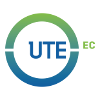Fault Tolerant MPC Controller for Electric Heater Control
DOI:
https://doi.org/10.29019/enfoqueute.v9n4.402Keywords:
Fault Detection, Fault Compensation, Electric Heater, MPCAbstract
Los controladores MPC son buenos eliminando el error de estado estacionario aun si el sistema controlado es afectado por perturbaciones. Pero el MPC no fue pensado para mantener su desempeño bajo condiciones de falla por sí solo. El control tolerante a fallas se compone de algoritmos de control, estrategias de detección y compensación de fallas. En este trabajo se implementó un controlador MPC usando la estrategia de matriz dinámica junto con un generador de residuo basado en modelo para detectar la ocurrencia de una falla en el sistema controlado. La cuantificación de fallas se logró mediante el uso de Redes neuronales artificiales y un filtro pasa banda, lo cual permitió realizar una acción de compensación para mejorar el tiempo de recuperación del sistema ante una falla.
Downloads
References
Ferreau, H., Kirches, C., Potschka, A., Bock, H., and Diehl, M. (2014). qpOASES: A parametric active-set algorithm for quadratic programming. Mathematical Programming Computation, 6(4), 327–363.
Gao, Z., Cecati, C., and Ding, S.X. (2015a). A survey of fault diagnosis and fault-tolerant techniques x2014;parti: Fault diagnosis with model-based and signal-based approaches. IEEE Transactions on Industrial Electronics, 62(6), 3757–3767. doi:10.1109/TIE.2015.2417501.
Gao, Z., Cecati, C., and Ding, S.X. (2015b). A survey of fault diagnosis and fault-tolerant techniques x2014;parti: Fault diagnosis with model-based and signal-based approaches. IEEE Transactions on Industrial Electronics, 62(6), 3757–3767. doi:10.1109/TIE.2015.2417501.
Isermann, R. (2011). Fault-diagnosis applications: model-based condition monitoring: actuators, drives, machinery, plants, sensors, and fault-tolerant systems. Springer Science & Business Media.
Khan, M., Tahiyat, M., Imtiaz, S., Choudhury, M., and Khan, F. (2017). Experimental evaluation of control performance of mpc as a regulatory controller. ISA Transactions, 70, 512 – 520.doi:https://doi.org/10.1016/j.isatra.2017.04.024. URLhttp://www.sciencedirect.com/science/article/pii/S0019057817304238.
Linares, P. and Rey, L. (2013). The costs of electricity interruptions in Spain. are we sending the right signals? Energy Policy, 61, 751 – 760.doi:https://doi.org/10.1016/j.enpol.2013.05.083. URLhttp://www.sciencedirect.com/science/article/pii/S0301421513004382.
Noura, H., Theilliol, D., Ponsart, J.C., and Chamseddine, A. (2009). Fault-tolerant control systems: Design and practical applications. Springer Science & Business Media.
Seron, M.M. and Don, J.A.D. (2015). Robust fault estimation and compensation for lpv systems under actuator and sensor faults. Automatica, 52, 294 – 301.doi:https://doi.org/10.1016/j.automatica.2014.12.003.URL http://www.sciencedirect.com/science/article/pii/S0005109814005822.
Thulukkanam, K. (2013). Heat exchanger design handbook.CRC Press.
Wang, H. and Jiang, A. (2017). An active fault-tolerantmpc for systems with partial actuator failures. In 201711th Asian Control Conference (ASCC), 1614–1619.doi:10.1109/ASCC.2017.8287415.
Wang, L., Zhou, X., and Wei, X. (2007). Heat conduction: mathematical models and analytical solutions. Springer Science & Business Media.
Published
How to Cite
Issue
Section
License
The articles and research published by the UTE University are carried out under the Open Access regime in electronic format. This means that all content is freely available without charge to the user or his/her institution. Users are allowed to read, download, copy, distribute, print, search, or link to the full texts of the articles, or use them for any other lawful purpose, without asking prior permission from the publisher or the author. This is in accordance with the BOAI definition of open access. By submitting an article to any of the scientific journals of the UTE University, the author or authors accept these conditions.
The UTE applies the Creative Commons Attribution (CC-BY) license to articles in its scientific journals. Under this open access license, as an author you agree that anyone may reuse your article in whole or in part for any purpose, free of charge, including commercial purposes. Anyone can copy, distribute or reuse the content as long as the author and original source are correctly cited. This facilitates freedom of reuse and also ensures that content can be extracted without barriers for research needs.
This work is licensed under a Creative Commons Attribution 3.0 International (CC BY 3.0).
The Enfoque UTE journal guarantees and declares that authors always retain all copyrights and full publishing rights without restrictions [© The Author(s)]. Acknowledgment (BY): Any exploitation of the work is allowed, including a commercial purpose, as well as the creation of derivative works, the distribution of which is also allowed without any restriction.























 Enfoque UTE - Facultad de Ciencias de la Ingeniería e Industrias - Universidad UTE
Enfoque UTE - Facultad de Ciencias de la Ingeniería e Industrias - Universidad UTE